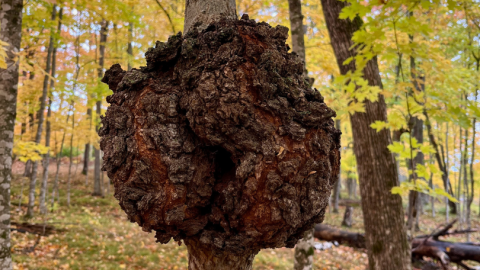Nearly the entire state of Minnesota is experiencing impacts to air quality Thursday, July 11, because of smoke from Canadian wildfires.
The conditions persisted for the fourth day in some parts of the state, particularly northwestern Minnesota, with the Bemidji area reporting hazy skies. A high-pressure system with light winds is contributing to the fine particles lingering over the region, registering as moderate on the Air Quality Index.
In its air quality forecast, the Minnesota Pollution Control Agency reported this weather pattern is expected to shift east later in the week, with winds switching to the southwest. This is expected to blow the smoke out of central and southern Minnesota for Friday and entirely out of the area by the weekend.
The smoke isn't the only concern when it comes to air quality, however. The MPCA stated increasing temperatures and mostly sunny skies may cause ozone to rise well into the yellow/moderate AQI category.
The AQI in Minnesota is determined by hourly measurements of five pollutants: fine particles, ground-level ozone, sulfur dioxide, nitrogen dioxide and carbon monoxide.
Fine particles pollution can cause shortness of breath, wheezing, coughing, chest pain and fatigue. The pollution can also make conditions worse for those with cardiovascular or heart disease, asthma or chronic obstructive pulmonary disorder.
Funding for this environmental story was provided by the Minnesota Environment and Natural Resources Trust Fund as recommended by the Legislative-Citizen Commission on Minnesota Resources (LCCMR).
-
In this episode, co-hosts Heidi Holtan and Charlie Mitchell are delighted by Sam Guida, an expert in mysterious plant-insect interactions and former student phenologist.
-
Staff at a skilled nursing facility in Bemidji bring the joy of the season to its residents.
-
Staff and residents at Havenwood Care Center celebrate the holidays throughout December in Bemidji.
-
It was a packed house for Misty Jarvi, Rhys Britt and their two daughters' home dedication one week before Christmas 2025.
-
KAXE's weekly list of concerts near you features Ted Feyder, Reggie Ducote, Tiny Town, and Acoustic Fest.
-
It was a packed house for Misty Jarvi, Rhys Britt and their two daughters' home dedication one week before Christmas 2025.
-
During the Phenology Report for the week of Dec. 23, 2025, Staff Phenologist John Latimer covers subnivean tunnels, and the comparative bite force of mink and voles.
-
From historical fiction to contemporary stories, non-fiction to science fiction, or poetry to fantasy--it’s clear we love to read. The KAXE staff share their favorite or most memorable books read in 2025.
-
During the week of Dec. 23, 2025, we enjoy reports of Bald Eagles, rabbits, and sea smoke. Staff phenologist John Latimer responds.
-
Teams from Slovakia, Latvia and Czechia were featured in exhibition games at Bemidji's Sanford Center Dec. 19-22, 2025, ahead of the World Jr. Men's Hockey Tournament.












